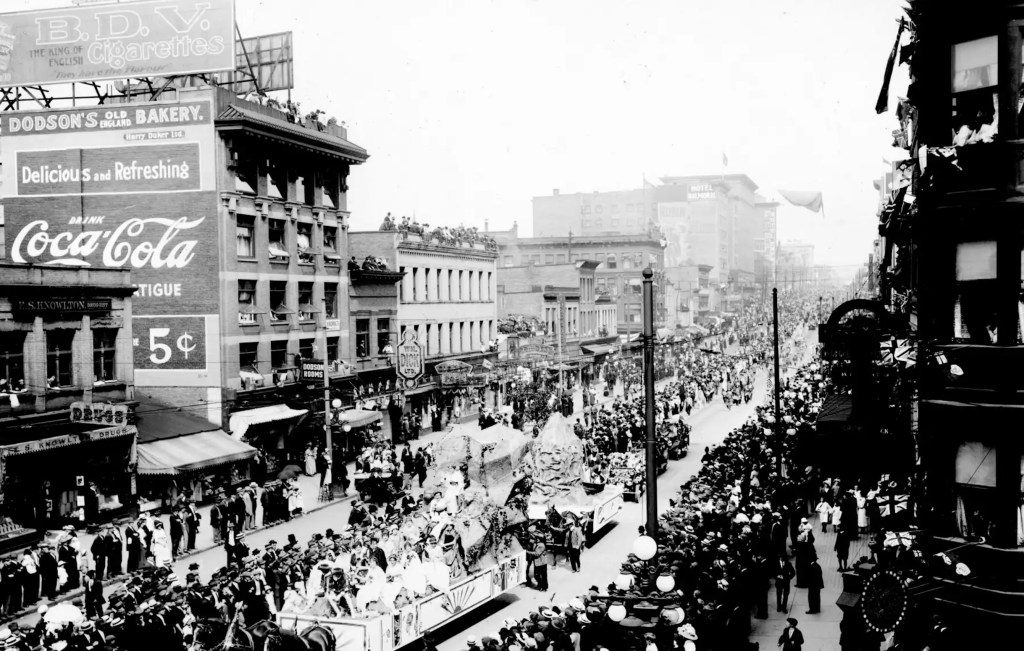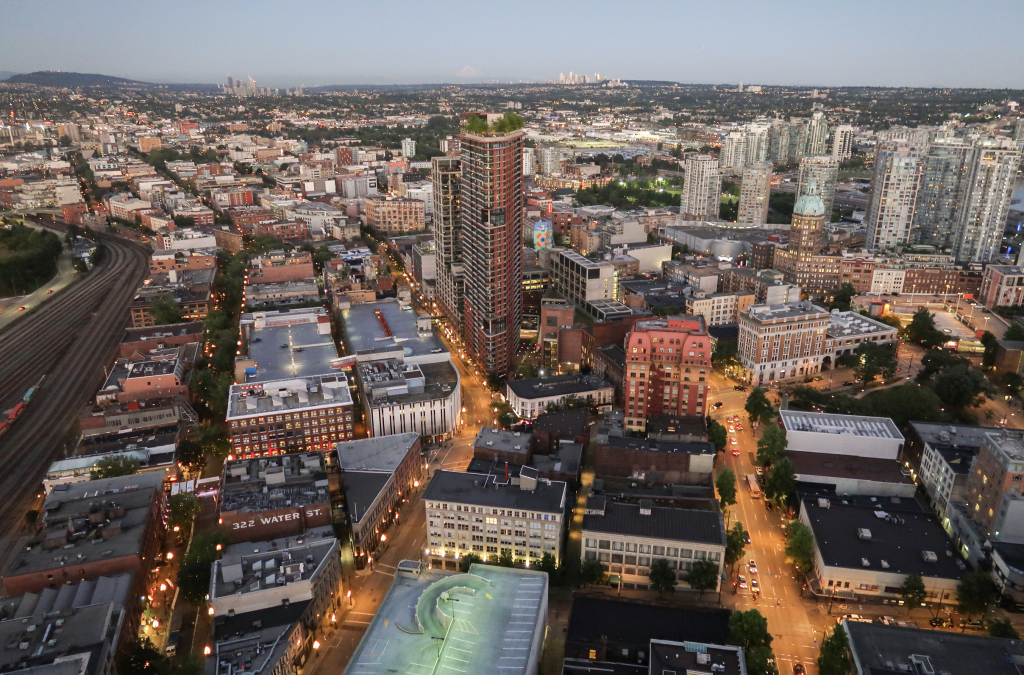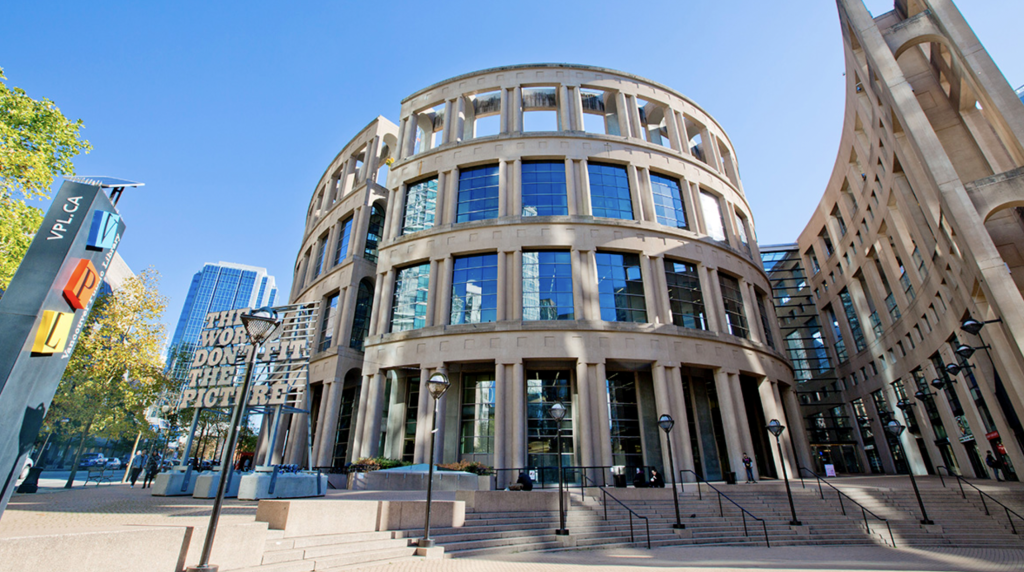Welcome to the vibrant and eclectic community of East Vancouver, where the streets are steeped in history dating back to the 1800s. Let’s take a journey through time and explore the past that has shaped the present of this culturally rich neighborhood.
In the early 1800s, East Vancouver was largely inhabited by indigenous communities such as the Musqueam, Squamish, and Tsleil-Waututh First Nations. The area was abundant in resources such as salmon, deer, and elk, making it a popular spot for hunting and fishing.
In 1858, the discovery of gold in the Fraser River brought an influx of settlers to the area, leading to the establishment of a sawmill in the False Creek area. The mill quickly became the center of the community, and its success attracted more industries such as shipbuilding and brickmaking.
The neighborhood grew rapidly, and by the turn of the century, it was a bustling hub of commerce and culture. In 1907, the iconic Grandview-Woodland neighborhood was established, named after the stunning views of the mountains and the dense forests that surrounded it.
As the city continued to grow, East Vancouver became a melting pot of cultures, with immigrants from China, Italy, and Portugal making it their home. This diversity is reflected in the architecture of the area, with buildings showcasing different cultural influences.
In the 1960s and 70s, East Vancouver experienced a wave of counterculture, with the emergence of hippie communes and art collectives. The famous Main Street was a hub of creativity, with many artists, musicians, and writers making it their home.
The 1980s saw a decline in the neighborhood’s fortunes, with many businesses closing down and crime rates rising. However, the community rallied together, and initiatives such as the Eastside Culture Crawl and the Powell Street Festival helped to revitalize the area.
Today, East Vancouver is a thriving community that celebrates its past while embracing its future. The neighborhood is home to a vibrant arts scene, with many galleries, theaters, and music venues showcasing the work of local artists. It also has a burgeoning food and drink scene, with a wide variety of restaurants and breweries offering delicious cuisine and craft beers.
In conclusion, East Vancouver is a neighborhood with a rich history and a bright future. Its diverse cultural heritage, artistic creativity, and community spirit make it a truly unique place that is full of life and energy. So come and explore the streets, immerse yourself in the culture, and experience the magic of East Van!
What Were the First Industries in East Vancouver
The first industries in East Vancouver can be traced back to the mid-1800s when the area was still sparsely populated. One of the first industries to take root was logging. The dense forests around the area were a rich source of timber, and this attracted many entrepreneurs who set up sawmills in the False Creek area.
The sawmills quickly became the center of the community and provided employment to many residents. The industry grew rapidly, and by the turn of the century, East Vancouver was one of the largest sawmill centers in the world.
Along with logging, shipbuilding also became a significant industry in East Vancouver. The deep waters of Burrard Inlet provided an ideal location for shipyards, and many ships were built in the area, including some for the Canadian Navy.
As the city continued to grow, other industries began to emerge. Brickmaking, for example, became a thriving industry in East Vancouver in the early 1900s. The abundance of clay in the area made it an ideal location for brickmaking, and many companies set up shop in the neighborhood.
Other industries that emerged in East Vancouver included canning, fishing, and farming. The fertile lands around the neighborhood were ideal for growing crops such as berries, vegetables, and fruits.
What Was East Vancouver Like in the 1800s
In the 1800s, East Vancouver was sparsely populated, with dense forests and waterways dominating the landscape. Indigenous communities relied on fishing, hunting, and gathering for survival. The discovery of gold in the late 1850s brought an influx of settlers, and sawmills and other industries were established to support the growing needs of the population. By the turn of the century, East Vancouver had become a bustling hub of commerce and industry, with diverse cultures adding to its unique character.
Who Are Well-Known Famous People in 1800s East Vancouver
East Vancouver was a relatively small and sparsely populated area in the 1800s, so there were not many well-known famous people who resided there. However, there were a few notable figures who made their mark on the community during this time.
One such person was Captain George Vancouver, who explored the Pacific Northwest region in the late 1700s and early 1800s. Although he did not reside in East Vancouver, he is known for having mapped and named many of the waterways and features in the area.
Another notable figure was Gassy Jack Deighton, a saloon owner who opened the first bar in East Vancouver in 1867. His establishment, known as the Globe Saloon, quickly became a popular gathering spot for locals and visitors alike. Today, the site of the Globe Saloon is marked by a statue of Gassy Jack in the neighborhood’s historic Gastown district.
Other notable figures from the 1800s in the Vancouver area include James Douglas, the first governor of British Columbia, and Dr. John Sebastian Helmcken, a prominent physician and politician who played a key role in the establishment of the province of British Columbia.
While there were not many famous people who resided in East Vancouver during the 1800s, the community was shaped by the contributions of many ordinary individuals who worked hard to build their lives and make the neighborhood what it is today.
How Was 1900s East Vancouver Different From the 1800s
The 1900s in East Vancouver was a period of significant change and growth, both in terms of its population and the development of the area. Here are some of the differences between the 1800s and 1900s in East Vancouver:
Population Growth: By the early 1900s, East Vancouver’s population had grown significantly, primarily due to an influx of immigrants from different parts of the world, including Europe and Asia. This increase in population led to the development of more residential neighborhoods, commercial areas, and infrastructure such as roads, bridges, and public transportation.
Urbanization: In the late 1800s, East Vancouver was mostly a rural area, with small farms and fishing villages. However, by the early 1900s, the area had become more urbanized, with the development of factories, mills, and other industries. The city also saw the construction of more residential buildings and public spaces, such as parks and community centers.
Technology: The turn of the 20th century brought many new technological advancements, which changed the face of East Vancouver. Electric power and telephone lines were installed, and transportation became faster and more convenient with the introduction of streetcars and automobiles.
Social Changes: The early 1900s were also a time of significant social change in East Vancouver. Women gained the right to vote in 1917, and the city saw an increase in social movements, such as the labor movement and the fight for workers’ rights. The area also experienced an influx of different cultures and ethnicities, leading to a more diverse and multicultural community.
Looking back on the changes that have taken place in East Vancouver over the past 2-centuries, it’s clear that the area has come a long way. From its humble beginnings as a rural outpost on the outskirts of the city to its current status as a thriving urban center, East Vancouver is a testament to the resilience, creativity, and tenacity of the people who call it home. While there are sure to be more changes and challenges in the years ahead, we can take comfort in the knowledge that this vibrant neighborhood has already overcome so much and will undoubtedly continue to thrive in the future.
Citations for Article
Wikipedia
Google Maps
East Village History
Vancouver Public Library
Downtown Eastside Neighbourhood House
Elections Canada
We Love East Van
City of Vancouver
Downtown Eastside Womens Centre






